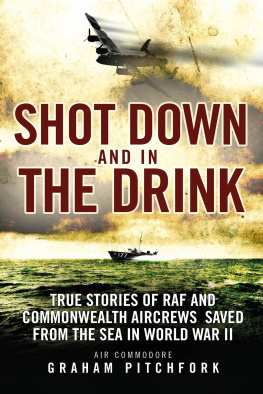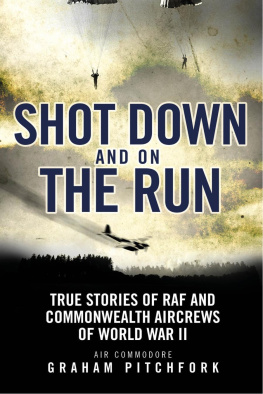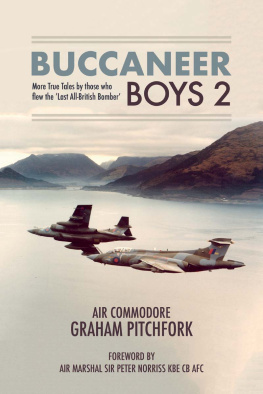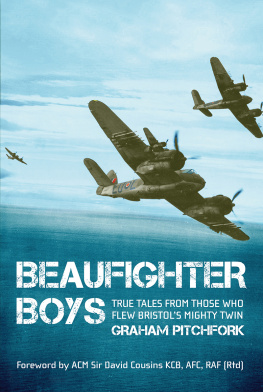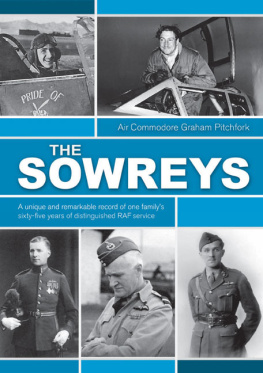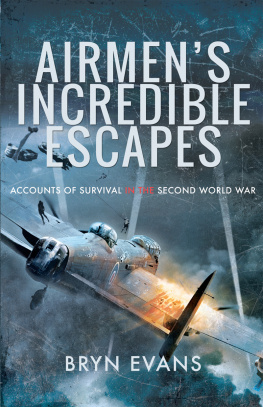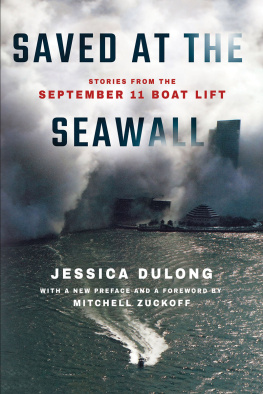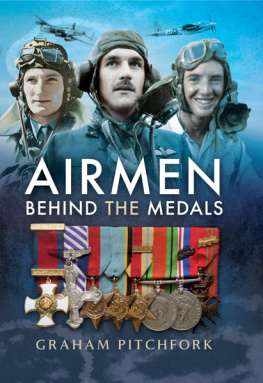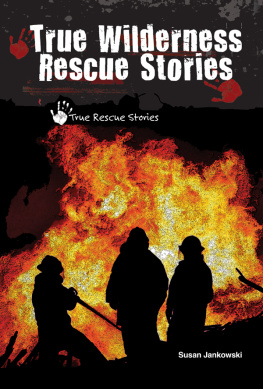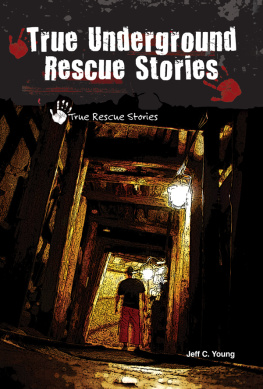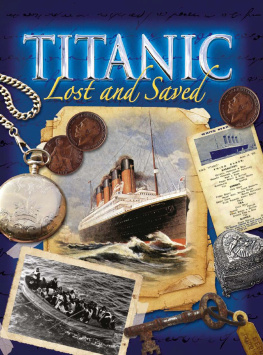

Contents
Flight Lieutenant John Cruickshank VC
The author has developed a reputation in recent years for his sympathetic understanding of the human dimensions of the air war. In his last book, Shot Down and on the Run , he related the amazing stories of human endeavour displayed by those who were shot down over enemy-occupied territory, yet avoided capture to return home with the aid of their gallant helpers. He has now turned his attention to those in an equally desperate predicament, the aircrew that came down in the sea.
At the beginning of the war, the Air Sea Rescue Service was almost non-existent, yet just six years later it could boast many specialist squadrons and hundreds of rescue launches based throughout the world wherever the RAF and Commonwealth air forces were flying. It was a remarkable transformation, yet little has been written about its organization and achievements.
Having set out in detail the background to the development of the Air Sea Rescue Services and the advances made in rescue methods and the survival aids available, the author relates some amazing accounts of the airmen forced down in the sea. He has also paid due recognition to some quite remarkable exploits of the rescuers. Men who landed their flimsy aircraft on rough seas, others who took great risks in landing their heavy flying boats on the open sea and the masters of rescue launches who often took their craft close to enemy shores and rescued men under enemy gunfire. The rescuers were a remarkable group of men whose exploits have received far too little attention and I am pleased that Air Commodore Pitchfork has located the archives to enable him to record their deeds.
Those of us who flew over the sea were always conscious of its everchanging moods and the need to treat it with respect and to be constantly prepared for any eventuality. Weather and sea conditions were often benign, giving those in distress a good chance of survival. But the sea could also be cruel and only those with immense resolve survived. Many did, and it is testimony to their great fortitude and courage.
This book also graphically highlights the lengths that the RAF rescue services, and the men who manned the rescue machines, were prepared to go to if there was the slightest chance of finding survivors and completing a rescue. It was a great comfort to all aircrew to know that no effort would be spared to save them.
Much has been written about the air war during the Second World War, a great deal of it concentrating on the operational aspects. Little attention has been paid to many of those who supported these major operations, not least the Air Sea Rescue Service. Air Commodore Pitchfork has made a major contribution to our knowledge and understanding of this neglected subject, and the gallant activities of the men of the Royal Air Force who manned the rescue craft and aircraft at home and abroad. The episodes that he has related are remarkable and will remind future generations what the human spirit is capable of when confronted with great adversity.
A great deal of war is about taking life, but the theme of this book in the context of war revolves around the saving of life. It is a fitting tribute to those who developed the services, the rescued and the rescuers.

ADGB | Air Defence of Great Britain |
AHB | Air Historical Branch |
AOC | Air Officer Commanding |
ASDIC | Allied Submarine Detection Investigation Committee |
ASR | Air Sea Rescue |
ASRMCU | Air Sea Rescue and Marine Craft Unit |
ASRU | Air Sea Rescue Unit |
ASV | Air to surface vessel |
BEF | British Expeditionary Force |
BEM | British Empire Medal |
DC | Depth charge |
DCAS | Deputy Chief of Air Staff |
DF | Direction finding |
DFC | Distinguished Flying Cross |
DFM | Distinguished Flying Medal |
DSC | Distinguished Service Cross |
DSM | Distinguished Service Medal |
DSO | Distinguished Service Order |
GPO | General Post Office |
HF | High frequency |
HSL | High speed launch |
IFF | Identification Friend or Foe |
kc/s | Kilocycles per second |
KOSB | Kings Own Scottish Borderers |
MBE | Member of the Order of the British Empire |
MF | Medium frequency |
MGB | Motor gun boat |
MTB | Motor torpedo boat |
OTU | Operational Training Unit |
POW | Prisoner of war |
RAAF | Royal Australian Air Force |
RAFVR | Royal Air Force Volunteer Reserve |
RCAF | Royal Canadian Air Force |
RML | Rescue motor launch |
RNLI | Royal National Lifeboat Institution |
RNVR | Royal Navy Volunteer Reserve |
RNZAF | Royal New Zealand Air Force |
R/T | Radio telephony |
SAAF | South African Air Force |
SEAC | South East Asia Command |
ST | Seaplane tender |
U-boat | Unterseeboot (submarine) |
USAAF | United States Army Air Forces |
USN | United States Navy |
VCAS | Vice Chief of the Air Staff |
VGO | Vickers gas operated (guns) |
VHF | Very high frequency |
VLR | Very long range |
WOP | Wireless operator |
WOP/AG | Wireless operator/air gunner |
W/T | Wireless telegraphy |
In the years immediately following the end of the Second World War, historians of the Air Ministrys Air Historical Branch (AHB) wrote a series of definitive narratives of the major air campaigns and theatre air operations. Those dealing with the Battle of Britain and Bomber Commands offensives have been published in recent years. Over the next few years, the present Head of the Air Historical Branch hopes to publish others but this will take time. Those narratives dealing with the support areas are unlikely to be published in the foreseeable future. Amongst them is the narrative dealing with Air Sea Rescue, which is available to the public at the National Archives as AIR 10/5553.

